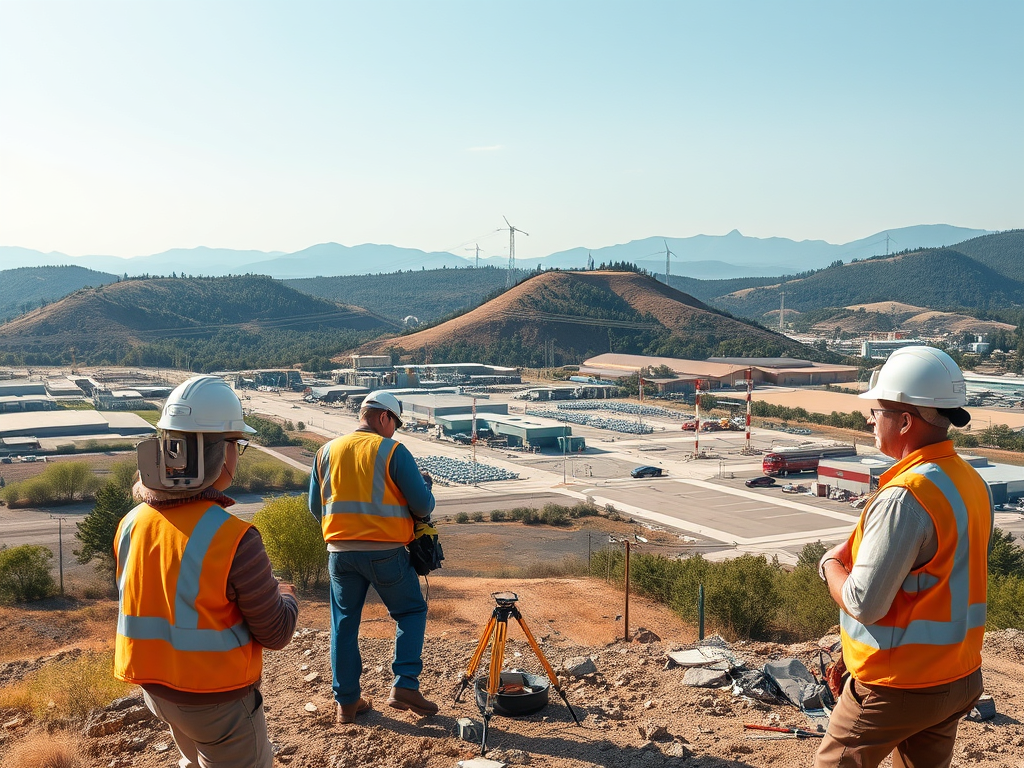Topographic surveys are essential tools in industrial site planning and development. They provide a detailed map of the physical features and contours of a site, enabling engineers, architects, and planners to make informed decisions about layout, design, and construction. For industrial sites, which often require extensive groundwork, infrastructure, and utilities, an accurate topographic survey is crucial for optimizing the site and avoiding costly surprises.
Here’s a breakdown of what a topographic survey involves for industrial sites and why it’s indispensable:
Purpose of Topographic Surveys in Industrial Sites
The primary purpose of a topographic survey is to map the elevation and contour of a site’s surface, identifying natural and man-made features such as hills, slopes, trees, buildings, roads, and utility lines. For industrial applications, this information helps in:
Site Feasibility Assessment:
By understanding the physical layout and constraints of a site, stakeholders can determine whether the land is suitable for their specific needs and what modifications might be required.
Grading and Drainage Planning:
Industrial sites often need extensive grading to create a level base for buildings and infrastructure. Topographic surveys help design effective grading and drainage plans, preventing erosion and minimizing flood risk.
Environmental and Regulatory Compliance:
For many industrial sites, there are environmental regulations to consider, especially if the site has wetlands, protected areas, or endangered species. Topographic surveys can identify these features early on, helping avoid violations and potential project delays.
Utility and Infrastructure Planning:
Industrial sites require connections to utilities like water, power, and sewage. A topographic survey provides precise data on existing utilities and helps in planning the location of new infrastructure while avoiding conflicts with underground or nearby structures.
Methods and Technologies in Industrial Topographic Surveys
Topographic surveys for industrial sites utilize several techniques and technologies to ensure high accuracy and efficiency:
Traditional Surveying Instruments:
Theodolites, levels, and total stations are used for precise measurements of land features and elevations, though this method can be time-consuming for large industrial sites.
GPS Surveying:
GPS equipment enables surveyors to capture precise location data quickly over large areas, making it a popular choice for large industrial sites where accuracy is critical.
LiDAR (Light Detection and Ranging):
LiDAR uses laser pulses from aerial or ground-based platforms to create detailed topographic maps, capturing even minute changes in elevation and identifying obstacles like vegetation and buildings.
Drones:
Drones equipped with cameras and sensors have become increasingly common in industrial surveys. They can cover large areas efficiently and provide high-resolution images and 3D models of the site.
Photogrammetry:
This involves taking overlapping photos from various angles to create 3D models, often used in tandem with drones to cover extensive areas.
Key Considerations in Industrial Topographic Surveys
Industrial sites have unique needs and challenges that differentiate their topographic surveys from those of residential or commercial projects:
Scale and Accuracy:
Industrial sites are typically larger and may have more complex topography. Surveyors need to maintain high levels of accuracy across larger areas, especially for projects that require heavy infrastructure like factories, warehouses, or plants.
Heavy Equipment and Load Bearing:
Industrial sites often involve heavy machinery and vehicles that require stable ground and specific load-bearing capacities. Topographic surveys help identify areas that may require reinforcement or excavation.
Future Expansion:
Many industrial sites plan for expansion over time. A topographic survey can provide data that is useful not only for the current project but also for future phases, minimizing the need for repeat surveys.
Safety and Accessibility:
Industrial sites, especially if they are remote or already have ongoing construction, can present safety challenges. Advanced surveying methods, such as drones and LiDAR, allow surveyors to collect data without physically accessing hazardous areas.
Deliverables of a Topographic Survey for Industrial Sites
The output of a topographic survey usually includes several deliverables, each essential for site planning and development:
Topographic Map:
A detailed map with contour lines showing elevation changes, slope grades, and all visible physical features. This is the primary tool for site layout planning.
3D Models:
3D models allow planners to visualize the site’s topography, which is particularly useful for industrial sites that require precise grading or have complex topographies.
Digital Elevation Models (DEM):
A DEM is a computer-generated model of the terrain that is essential for various simulations, including drainage analysis and structural stability.
Cross-Sectional Views:
Cross-sections give planners a side view of the site at specific intervals, which is helpful for planning foundations, grading, and infrastructure placement.
Benefits of Topographic Surveys for Industrial Projects
Topographic surveys deliver several benefits that streamline the development of industrial sites:
Cost Efficiency:
By identifying potential issues early, such as areas that require heavy grading or specific structural support, topographic surveys reduce unexpected costs during construction.
Design Optimization:
Engineers can optimize the layout of structures, infrastructure, and utilities based on the natural contours and features of the land.
Risk Reduction:
Accurate mapping of flood-prone or unstable areas allows planners to mitigate risks associated with industrial activities, which often involve heavy machinery and hazardous materials.
Enhanced Collaboration:
With digital deliverables, survey results can be shared easily among stakeholders, enabling better collaboration between architects, engineers, and regulatory agencies.
In summary, topographic surveys are critical for the successful planning and development of industrial sites. They provide the foundational data that helps in evaluating site feasibility, planning for grading and drainage, ensuring regulatory compliance, and optimizing infrastructure layout. As the industrial sector becomes more complex and regulated, the role of topographic surveys in preemptively addressing engineering and environmental challenges has only become more essential.
